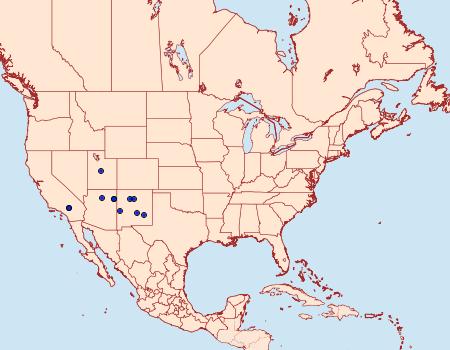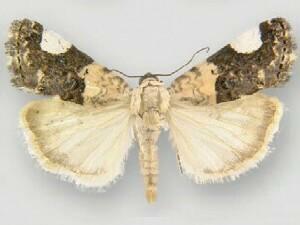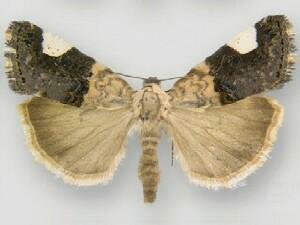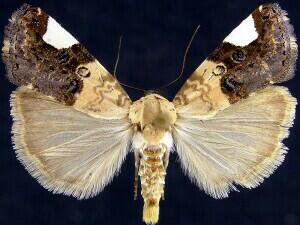Noctuidae
931355 –
9158 Tarache areloides
Barnes & McDunnough, 1912
|
|
|
| Photographs are the copyrighted property of each photographer listed. Contact individual photographers for permission to use for any purpose. |

Large Map & Chart
Report Errors
About Maps
|
| Distribution: |
Arizona and New Mexico in forested mountain canyons. Elevations ~ 5,600-8,300 ft. |
Seasonality
and Size: |
July - September. Wingspan ~ 24-28 mm. |
Description/
Field Marks: |
- Forewing dark buff toward body, brown toward tip.
- Large trapezoidal white spot on costal margin.
- Medial margin of brown area even and vertical.
- Orbicular and reniform almost obsolete.
- Hindwing dark, grayish brown at margin.
|
| Similar Species: |
- The Acontia areli group consists of six species, five of which are found in our check list area. They are similar in appearance, but differ in genitalia. See individual species pages for tips on identification. Photographs below by Cliff Davis and Jocelyn Gill.
 | | 9158 - A. areloides | 9159 - A. areli | 9159.1 - A. toddi | 9159.2 - A. geminocula | 9159.3 - A. albifusa |
. - Pinned specimens of related species. (Hint: select View by Region on the related species page.)
|
| Synonymy: |
areloides Barnes & McDunnough, 1912 (Tarache) - MONA 1983: 9158 |
| Taxonomic Notes: |
Tarache areloides: Formerly placed in the genus Acontia. |
|
| References (Caution: DNA barcoding at BOLD provides evidence of relatedness, not proof of identification; some BOLD specimens shown may not be sequenced.) |
- Barcode of Life (BOLD) - Caution: Identifications often erroneous; DNA barcode provides evidence of relatedness, not proof of identification; many specimens not sequenced.
- Ferris, C. & D. Lafontaine, 2009. Review of the Acontia areli group with descriptions of three new species (Lepidoptera, Noctuidae, Acontiinae). ZooKeys, 9: 27-46.
- Species Page at BugGuide.Net
- Species Page at The Noctuidae of North America by Robert W. Poole (Nearctica.com) - archived page access (go to a year prior to 2020 and select a blue circled date from the calendar).
- Species Page at iNaturalist
|

© CNC - Jocelyn Gill

© CNC - Jocelyn Gill

27mm – © Jim Vargo
|







